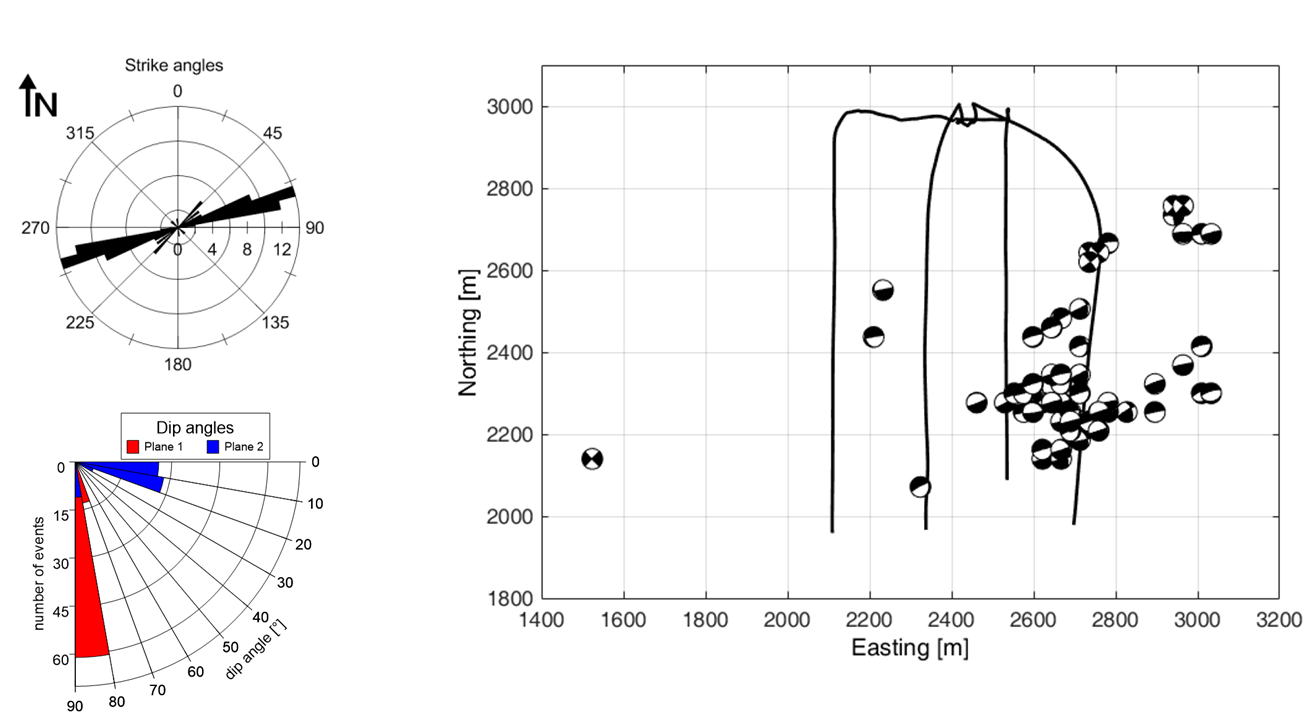Course Details
Home / Public Courses / Course Details
Microseismic Monitoring in Conventional and Unconventional Reservoirs (GPH41)
30 Sep-1 Oct 2024 2 days Vienna, AustriaCourse Fee: 2250 EUR + VAT
Description
Microseismic monitoring became a broadly used tool for oil and gas unconventional, geothermal and CO2 sequestration but also conventional production in energy exploration. Its use ranges from mapping of hydraulic fractures, through determination of stress orientation, cap rock integrity and faulting control in reservoirs to control of seismic hazards related to the induced seismicity. This course provides an insight into the most common methodologies of microseismic monitoring discussing their advantages and limits of their applications. Participants will be able to set the right expectations, select the appropriate monitoring methodology and interpret the data in a meaningful way.
Course Level: Skill
Instructor: Leo Eisner
Course Level: Skill
Instructor: Leo Eisner

Designed for you, if you are...
- A professional with a geoscience background
No specific prior knowledge is required, although a familiarity with geophysical terminology, hydraulic fracturing and/or seismology is useful.
How we build your confidence
- Practical examples of data and computer simulations
- Theoretical concepts are explained and illustrated on case studies
- You will go through several exercises
- Case studies
- Q&A including short tests
The benefits from attending
By the end of the course you will feel confident in your understanding of how to:- Use or request the appropriate processing technique from a service company
- Design an array for passive seismic (surface or downhole) monitoring to meet your targets
- Determine uncertainties of locations for microseismic events in microseismic monitoring arrays
- Orient downhole geophones from a perforation or calibration shot
- Quality check locations of microseismic events: estimate approximate distance and depth of a recorded microseismic event on a downhole array
- Build a velocity model (P- and S-wave) from a sonic log or check shot measurement suitable for microseismic monitoring
- Calibrate a velocity model for both surface and downhole arrays
- Estimate the source mechanism from surface microseismic monitoring
- Manage and mitigate hazards resulting from induced seismicity
- Estimate the stimulated reservoir volume
- Effectively use the information provided by microseismicity
- Understand how the stress is constrained by microseismic events
Topics
- Introduction
- Definition of microseismicity, induced / triggered seismicity
- A brief review of microseismicity outside the oil industry: water reservoirs, mining and geothermal
- Induced seismicity by reservoir production
- Historical review of microseismicity during reservoir production
- Historical review of microseismicity by hydraulic fracturing (M-site, Cotton Valley, Barnett, etc.)
- Principles of hydraulic fracturing and geomechanics - Earthquakes
- Instrumentation for passive seismic including Distributed Acoustic Sensors (DAS)
- Aspects of the DAS measurement for passive seismic
- Frequency content of the microseismic data
- Earthquake location techniques
- Relative locations
- Microseismic location techniques and exercises - Downhole location technique
- Single well monitoring technique
- P-wave and S-wave polarisation
- P-wave only location from downhole arrays
- Picking strategies for microseismic data
- Optimal design of downhole monitoring array
- Orientation of downhole geophones
- Velocity model calibration
- Inclined / dual and multi-well monitoring techniques - Surface monitoring technique
- Vertical component only, uncertainty associated from P-wave locations: depth vs. origin time
- Detection uncertainty and signal-to-noise ratio
- Frequency content, attenuation and detection
- Design of surface monitoring array
- Calibration shots / velocity model building: isotropic vs. anisotropic velocity
- Relative locations
- Downhole and surface location case study
- Near surface amplification - Source mechanisms
- Concept of source mechanism, definition of dip, strike and rake for shear source
- Description of shear, tensile, volumetric, CLVD source through moment tensor
- Inversion for source mechanisms from single monitoring borehole / multiple monitoring boreholes / surface P-only data
- Source mechanisms of microseismic events - Source characterisation
- Magnitude local and moment
- Magnitude and energy
- B-value and magnitude of completeness
- Stress drop, source dimensions - Anisotropy
- Introduction to anisotropy
- Effect of anisotropic media on S-waves: shear wave splitting
- Shear wave splitting observed in microseismic data
- Inversion of anisotropic media from P and S-waves using microseismic events
- P-wave anisotropy on surface monitoring data
- Time-lapse changes in anisotropy - Reservoir simulations
- Current use of microseismicity in the oil industry
- Diffusion model for pressure triggering of microseismic events
- Discrete fracture networks constrained by microseismicity
- Reservoir simulations and history matching - Seismicity in the vicinity of oil or gas reservoirs
- Theory and history of induced felt seismicity
- Seismic moment and total injected volume
- Blackpool case study as an example of induced seismicity
- DFW seismicity case study
- Social issues related to hydraulic fracturing - Case studies and conclusions
- Recent important case studies: locations and source mechanisms
- Relationship between microseismicity and hydraulic fracturing
- Summary of the class
- The most important things to remember about microseismicity
Customer Feedback
"Easy and open discussion with the instructor, high level of expertise of the instructor." - Geophysicist at Storengy"I liked the enthusiasm and knowledge of the instructor, and the possibility to ask a lot of questions. Leo is very knowledgeable and very happy to answer any question about induced seismicity. I really learned a lot from him!" - Geoscientist at EBN
"Instructor is experienced subject matter expert. Course delivered very well." - Quality Engineer at NCOC
© All rights reserved
HOT Engineering GmbH Tel: +43 3842 43 0 53-0 Fax +43 3842 43 0 53-1 hot@hoteng.com
